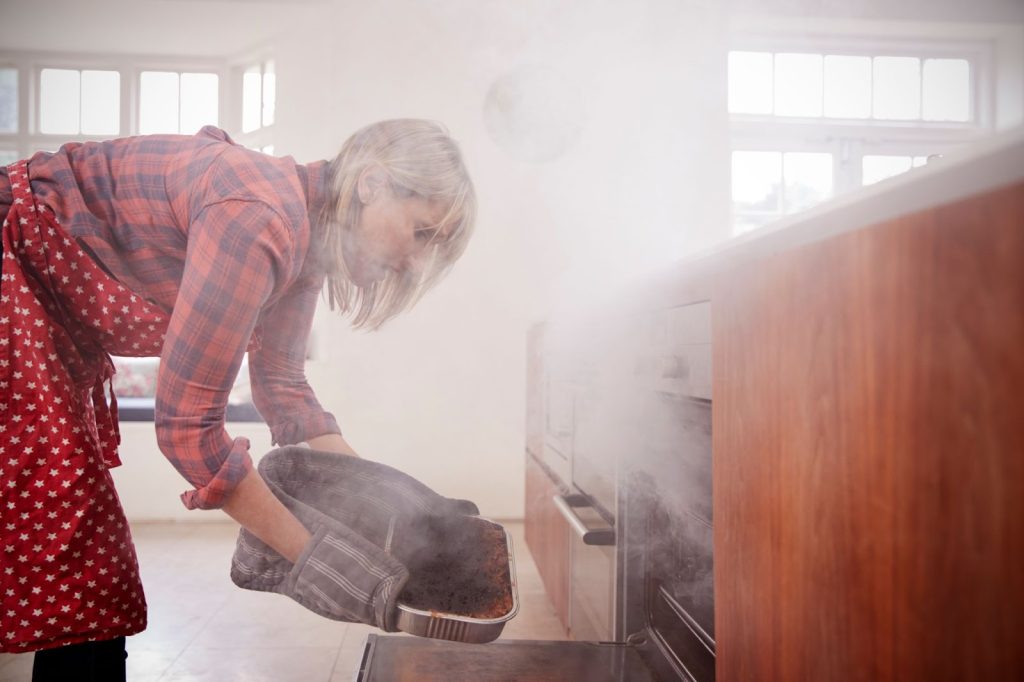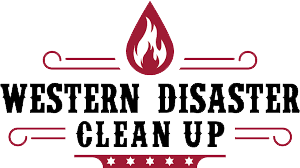Smoke damage in your home is subtle and insidious, often creeping into fabrics, walls, and even structural elements without immediate detection. Recognizing the signs of smoke damage early will help prevent long-term impacts on your home and health.
In this blog, we will explore the key indicators of smoke damage that every homeowner should be vigilant about. From discoloration of walls and ceilings to persistent odors that refuse to fade, understanding these signs will help you take swift action to mitigate damage and restore your living environment.
Let’s take a closer look!
Sign #1: Discoloration and stains
One of the most apparent signs of smoke damage is the discoloration of walls, ceilings, and other surfaces. After a fire, the residue left behind often results in yellowish or brownish stains on these surfaces. Depending on the intensity of the incident, these stains may be localized around the area where the fire occurred or spread throughout the house.
To properly identify discoloration, pay attention to any changes in color or noticeable patches on surfaces around your home. This could include walls, ceilings, furniture, or even fabrics such as curtains and upholstery. Smoke damage affects both porous and non-porous materials, making it essential to examine all surfaces thoroughly.
Stains on walls and ceilings are often more evident since they are typically lighter in color. White or off-white surfaces may exhibit a yellowish tint, while lighter paint colors might turn darker due to smoke particles adhering to them. Furniture and fabrics may also bear the brunt of smoke, showing noticeable discoloration and becoming harder to clean.
Sign #2: Persistent odors
Smoke is made up of tiny particles and gases that penetrate various surfaces in your home, including walls, furniture, carpets, and even clothing. These particles can settle into these materials and continue to release odors over time.
This is why, even if you have already cleaned the visible signs of smoke damage, you may still experience the unpleasant smell lingering in your living spaces.
It’s important to note that different types of fires produce different kinds of smoke, and each type requires its own specific cleaning techniques. For instance, fires caused by burning wood produce different odors compared to those caused by burning plastic or synthetic materials.
You should trust your sense of smell to identify signs of persistent odors in your home. If you enter a room and immediately notice a strong smoky smell, it indicates that smoke particles have settled into the objects and surfaces within that room.
However, keep in mind that your olfactory senses will adapt to prolonged exposure, making it more difficult to detect the smell after spending extended periods in a smoke-damaged environment. In such cases, it may be helpful to ask a visitor or someone who has not spent much time in your home whether or not they can smell any lingering smoke odor.
Another sign of persistent smoke odor is when the smell seems to be coming from specific areas or objects in your home.
For instance, if you notice a distinct smoky smell coming from a particular piece of furniture or a specific part of a room, it is likely that the smoke particles have settled deeply within that object or area. This localized odor is a strong indication that smoke damage has occurred in that particular area, even if it is not visually apparent.

Sign #3: Soot residue
Have you ever seen those dark, powdery stains on your walls, ceilings, or other surfaces in your home? Well, that’s what we call soot residue, and it’s one of the significant signs of smoke damage. Soot residue is a black carbon-like substance that is left behind after a fire or when smoke infiltrates your home.
Soot residue appears in different forms, ranging from loose, dry particles to sticky, oily smudges. It affects various areas of your home, including walls, ceilings, furniture, appliances, and even personal belongings. The severity of soot residue depends on the type and intensity of the fire and the materials burned.
The first step in identifying soot residue is to carefully examine your home for any discoloration or staining on surfaces. Look out for black or gray streaks on walls, especially near areas where the fire occurred, such as fireplaces, stoves, or candles.
Pay close attention to corners, crevices, and areas close to ventilation systems, as soot will travel through air ducts and settle in those places. Soot residue also creates a distinctive smoke odor in your home, so trust your nose if you sense an unusual smell after a fire.
To determine if the residue is indeed soot, gently touch the stained area. Soot residue feels gritty or greasy, and it leaves stains on your fingers or a smudge when wiped.
Another method to detect soot residue is by using a damp cloth. Take a clean white cloth or paper towel and gently wipe the suspected area. If you notice black or gray marks on the cloth, you likely have soot residue in your home.
It is important to note that soot residue may not always be visible to the naked eye. In some cases, it can be hidden within the fibers of your carpets, upholstery, or curtains.
If you’ve experienced a fire or smoke exposure in your home, it is advisable to have a professional inspector assess the extent of the damage. They have specialized equipment to detect hidden soot residue.
Sign #4: Corrosion and rust
Smoke damage also affects various materials throughout your home, leading to corrosion and rust. Corrosion is a chemical reaction that occurs when metal is exposed to smoke, acidic particles, or other corrosive substances. Consequently, this weakens the structural integrity of affected items and poses a potential danger if not attended to.
Start by going through your home and inspecting metal surfaces such as light fixtures, appliances, doorknobs, window frames, and even electronics. Look for any signs of discoloration, warping, or flaking on metal surfaces. These visual cues indicate the presence of smoke damage, which leads to corrosion and rust over time.
Rust, a common type of corrosion, usually appears as orange-brownish spots on metal surfaces. Look for any signs of rust, especially in areas typically exposed to smoke particles, such as kitchens, living spaces with fireplaces, or rooms near the site of a fire incident. Rust not only mars the aesthetic appeal of your belongings but also compromises their functionality.
Sign #5: Air quality issues
One of the most apparent signs of smoke damage is the lingering smell of smoke in your home. Even after taking steps to clean up the visible signs of damage, the stench of smoke may persist.
The odor is more pronounced in enclosed spaces, such as closets or rooms with limited ventilation. If you still smell smoke long after extinguishing a fire or experiencing a nearby brush fire, it’s a clear indication of smoke damage.
If you or your family members begin to experience unexplained allergy-like symptoms or increased respiratory issues, it could be due to smoke damage affecting your home’s air quality. The microscopic particles released by smoke can irritate your airways, leading to coughing, sneezing, watery eyes, and a general feeling of discomfort.
Smoke damage can create a moist environment conducive to mold and mildew growth. When smoke interacts with moisture, it forms a sticky residue known as soot. Soot settles on walls, furniture, and fabrics, providing a breeding ground for mold. Look for signs of mold, such as musty odors, visible patches of fungus, or discoloration on walls and ceilings.
If you suspect mold growth, it’s crucial to address it promptly to prevent further damage and potential health risks. Consulting with a professional mold remediation specialist can help identify the extent of the damage and provide appropriate steps to mitigate the issue.
Smoke contains various harmful chemicals and particulate matter that can compromise the air quality in your home. Prolonged exposure to these irritants can result in difficulty breathing, especially for individuals with pre-existing respiratory conditions like asthma or chronic obstructive pulmonary disease (COPD).
If you notice a persistent tightness in your chest, shortness of breath, or increased wheezing, it’s crucial to address your home’s air quality. Ensuring proper ventilation throughout your living spaces, regularly cleaning and replacing air filters, and using air purifiers are effective measures to improve the air you breathe.
Call Western Disaster Clean Up today
If you’ve noticed any signs of smoke or soot residue in your home, don’t wait to address them. Contact Western Disaster Clean Up today. Our team of experts is equipped to handle all aspects of smoke damage restoration, ensuring your home is thoroughly cleaned and restored to a safe, healthy environment.
Don’t let smoke damage compromise your living space — contact us, and let our professionals provide the solutions you need for a fresh, clean home.

